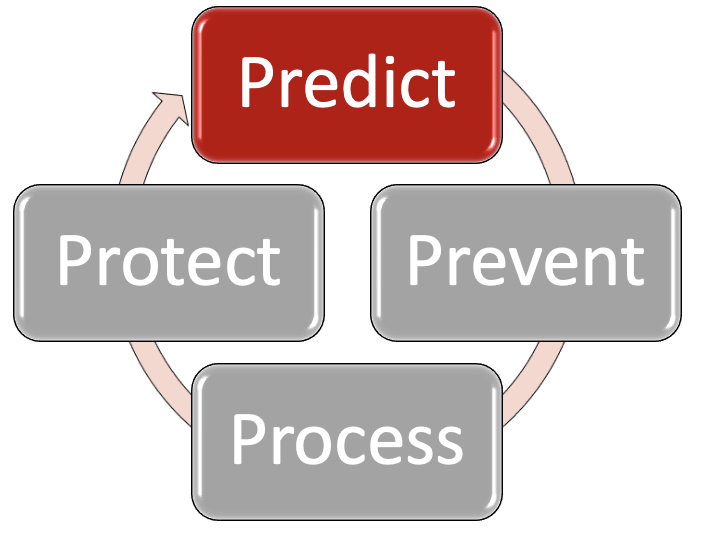Prediction

The severity of the thermal effect of an arc flash is defined by the amount of incident energy that a victim, standing at a given distance away from the arc, could receive to the skin surface. In Chapter 2: What is Arc Flash, I said that an exposure to heat flux of 5.0J/cm2 (equivalent of 1.2 cal/cm2)during a 1 second exposure, can produce the onset of second degree burn to the skin. This value is used by many standards as the benchmark that defines protection against the thermal effects of arc flash and the threshold of a zone which is commonly known as the arc flash boundary. This is where the predicted incident energy is calculated to be 5.0J/cm2 (1.2 cal/cm2).

1.2 calories per square centimetre is often depicted as the amount of incident energy that one could receive if you were to hold your finger in the hottest part of a match or candle flame for one second. Not to be recommended but it is unlikely that you would receive anything more than mild superficial burns. Whilst the SI unit used (International System of Units) is joules per square centimetre (J/cm2), most of the references to incident energy within this guide will be in calories per square centimetre (cal/cm2) as this unit of measure tends to be universally used for protective measures.
So, to truly understand the risks of the arc flash hazard, you need to be able to calculate the incident energy level at the worker. This first P, Predict, is fundamental to the whole risk assessment approach. To paraphrase Peter Drucker; “if you can’t measure it, you can’t manage it”. This is the reason why I have put so much effort into providing the tools, calculators and tables to provide the means to predict incident energy. In using these hazard severity tools to calculate the incident energy at the point of work, this will provide the bedrock of information from which decisions can be made in respect of safely managing the risk. Once you can identify and quantify the hazard, you can decide if work can proceed and if so, what preventive or protective measures need to be in place. In addition, there are hazard severity calculators for prospective short circuit current, DC arc flash and quick tools for circuits with circuit breaker protection or fuse protection. This will allow for a figure to be obtained very quickly and easily. Once this is completed, you can continue to manage the risk by using the Prevent, Process and Protect chapters.
4.1 What Does Arc Flash Hazard Prediction Tell Me?
The debate about arc flash hazard management in Europe has been polarised around the need for personal protection and in the UK especially, the aversion to PPE has suppressed the true losses due to arcing faults. It is time to move on and to focus on predicting hazard severity to assist in avoiding serious injury and other consequences such as production losses, equipment/building damage, fines and compensation claims. All this before considering the provision of personal protective equipment as a last line of defence to protect against residual risk. As mentioned previously, there are tools appended to this guide which will allow you to undertake a hazard severity prediction and the following will outline what this will tell you.
4.1.1 How Big is the Bang?
Firstly, and bluntly it will tell you just how big the bang will be. You can be standing in front of two identical electrical switch panels, with one being a relatively low-level of arc flash hazard and the other one could be extremely high. In other words, one contains the equivalent of a domestic cat behind the locked panel doors whilst the other one contains a raging tiger. So, if the electrical panels are identical, what is it that causes this to be so? The answer could be very small differences in fault level or protection device characteristics or settings. The only way you will find this out is by the risk assessment process and by doing the maths. Why would you want to know?
4.1.2 Legal Requirements.
To satisfy legal requirements for risk assessment which is embodied in law through European Council Directive 89/391 (EU Workplace Health and Safety Directive) and how this directive is interpreted in secondary legislation in member countries. (This is regardless of EEC past membership and further information can be found in Chapter 16: Rules, Codes and Legislation) In Chapter 3: Risk Assessments and the Four P Guide it was established that this required an identification of the hazard and then to decide how likely it is, that someone could be harmed and how seriously (the risk). Finally, we are called on to take action to eliminate the hazard, or if this is not possible, to control the risk.